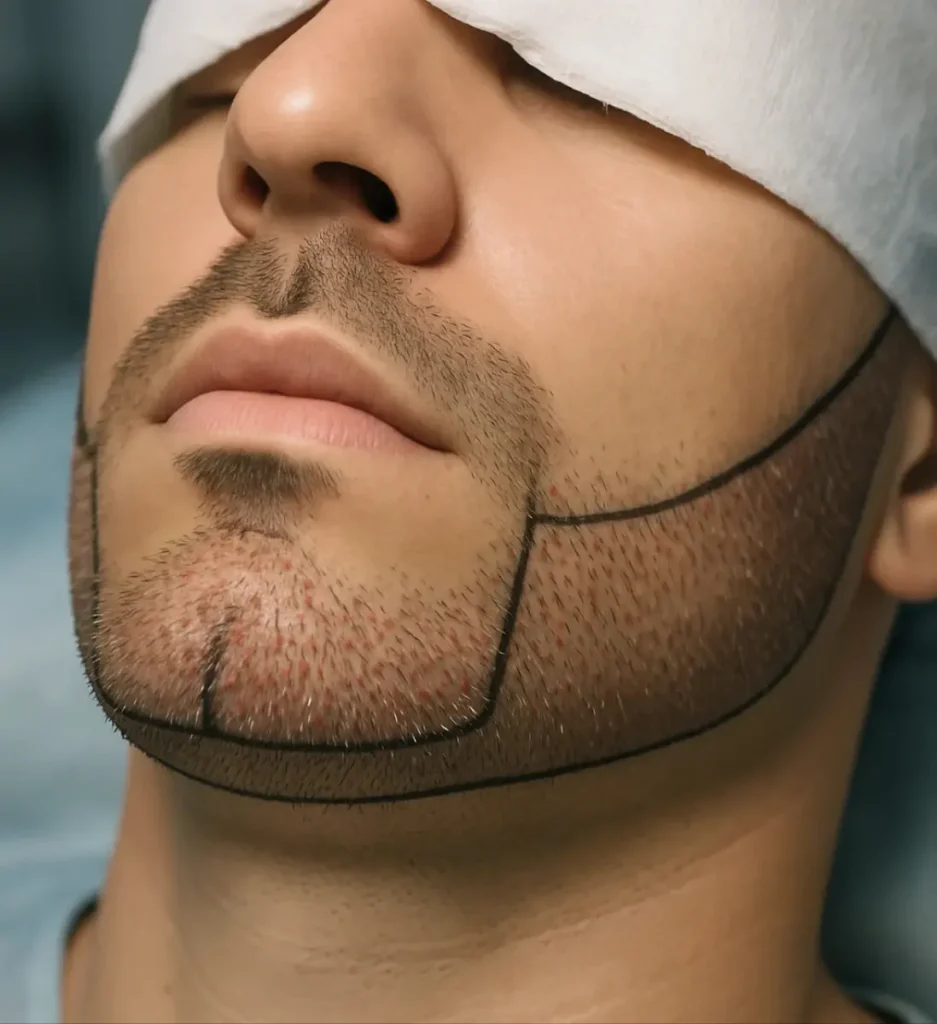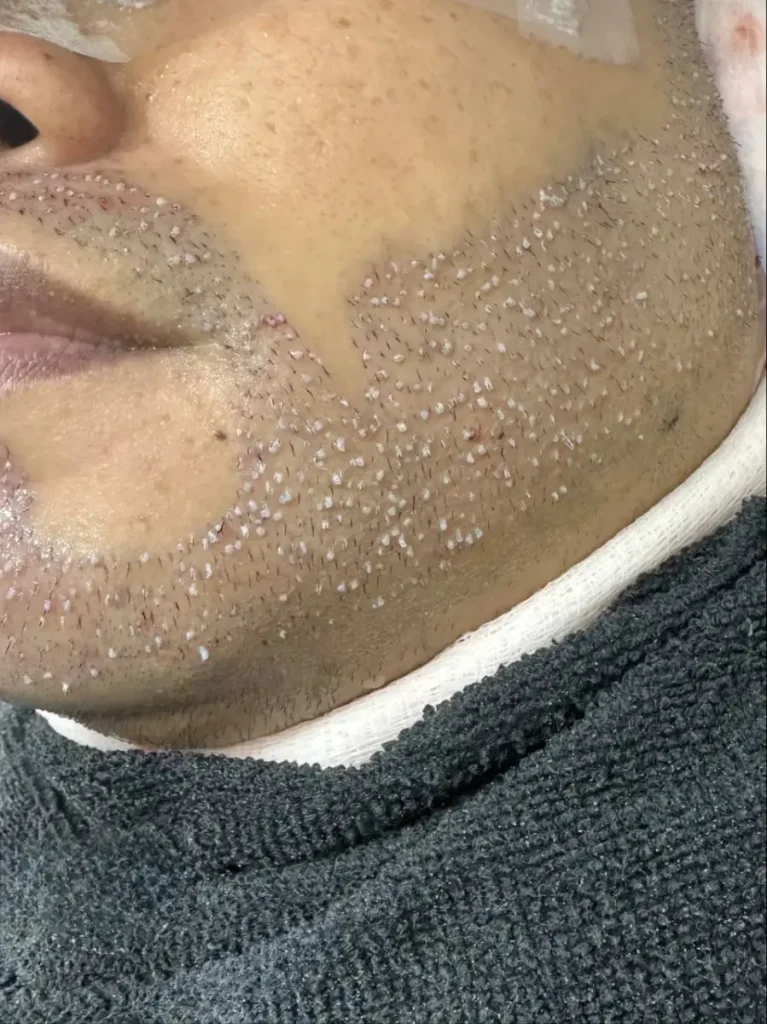Beard Transplant
- Home
- Beard Transplant

What Is a Beard Transplant?
A beard transplant is a cosmetic procedure that transfers healthy hair follicles from one part of the body (usually the back of the scalp) to the beard area. The transplanted follicles continue to grow naturally, resulting in a permanent and natural-looking beard.
The Permanent Solution for a Fuller, Natural Beard
In recent years, beards have become a symbol of masculinity, confidence, and style. From neatly trimmed stubble to thick, full beards, men worldwide are embracing facial hair as an essential part of their identity. However, not everyone is naturally blessed with the ability to grow a thick and even beard. Patchy growth, thin facial hair, or complete lack of beard can leave many men feeling self-conscious.
This is where a beard transplant comes in — a safe and permanent solution that uses your own hair follicles to restore a natural-looking beard. In this guide, we’ll explore everything you need to know about beard hair transplants, including causes of poor beard growth, the procedure, benefits, recovery, and FAQs.
Why Do Some Men Struggle with Beard Growth?
Beard growth depends on various factors, and not all men experience the same results.
Beard Transplant Techniques
FUT (Follicular Unit Transplantation): A strip of hair is removed from the donor area, and follicles are implanted into the beard.
FUE (Follicular Unit Extraction): Individual follicles are extracted and placed in the beard area. This is the most common method for beard transplants today because it leaves minimal scarring.
Beard Transplant Procedure: Step by Step
Consultation: Your surgeon assesses beard goals, donor hair quality, and overall suitability.
Donor Hair Extraction: Hair follicles are taken from the scalp or other donor areas.
Beard Area Preparation: Tiny incisions are created where follicles will be placed.
Implantation: Follicles are carefully inserted at the correct angle and density for natural growth.
Recovery: Healing takes about 1–2 weeks, and new beard growth becomes noticeable in a few months.
Common Reasons for Patchy or Thin Beards
1. Genetics
The most common reason for patchy or uneven facial hair.
2. Hormonal Imbalance
Low testosterone or DHT sensitivity can affect hair follicle activity.
3. Alopecia Areata
An autoimmune condition that can cause bald spots on the face.
4. Scarring or Injury
Accidents or burns can damage facial follicles.
5. Lifestyle Factors
Poor diet, high stress, and lack of sleep can slow beard growth.
Popular Services
Book Appoinment
Make a call for any type of query.
+60 12-517 4606

Who Is a Good Candidate for Beard Transplant?
- You may be a good candidate if you.
- Have patchy, thin, or no beard growth.
- Have enough donor hair on the scalp.
- Are healthy with no severe skin conditions.
- Desire a fuller, permanent beard solution.
Alternatives to Beard Transplant
Not all men choose surgery right away. Alternatives include, However, these are temporary or limited in effectiveness. For permanent results, a beard transplant remains the best solution.
- A topical solution that can sometimes improve patchy beard growth.
- Uses plasma from your blood to stimulate follicle activity.
- Oils, vitamins, and supplements may help in mild cases.
- Encourages circulation and improves hair follicle function.

FAQs About Female Hair Loss
Q1: Is a beard transplant painful?
No. The procedure is performed under local anesthesia, and discomfort is minimal.
Q2: How long does a beard transplant take?
Depending on the number of grafts, it can take anywhere from 4–8 hours.
Q3: Are the results permanent?
Yes. Once transplanted, follicles grow like natural facial hair for life.
Q4: When can I shave after a beard transplant?
Most surgeons recommend waiting at least 2–3 weeks before shaving.
Q5: Will the transplanted beard look natural?
Absolutely. Follicles are implanted at the correct angle and direction, ensuring natural-looking growth.
Final Thoughts
A beard transplant is a life-changing procedure for men struggling with patchy, thin, or uneven beards. It provides a permanent, natural-looking solution that allows you to style your beard exactly how you want — whether it’s a full beard, goatee, or mustache.
If you’ve always dreamed of a fuller beard, consult a qualified hair restoration specialist to see if you’re a good candidate. With today’s advanced techniques, achieving the beard you’ve always wanted is more possible than ever.
